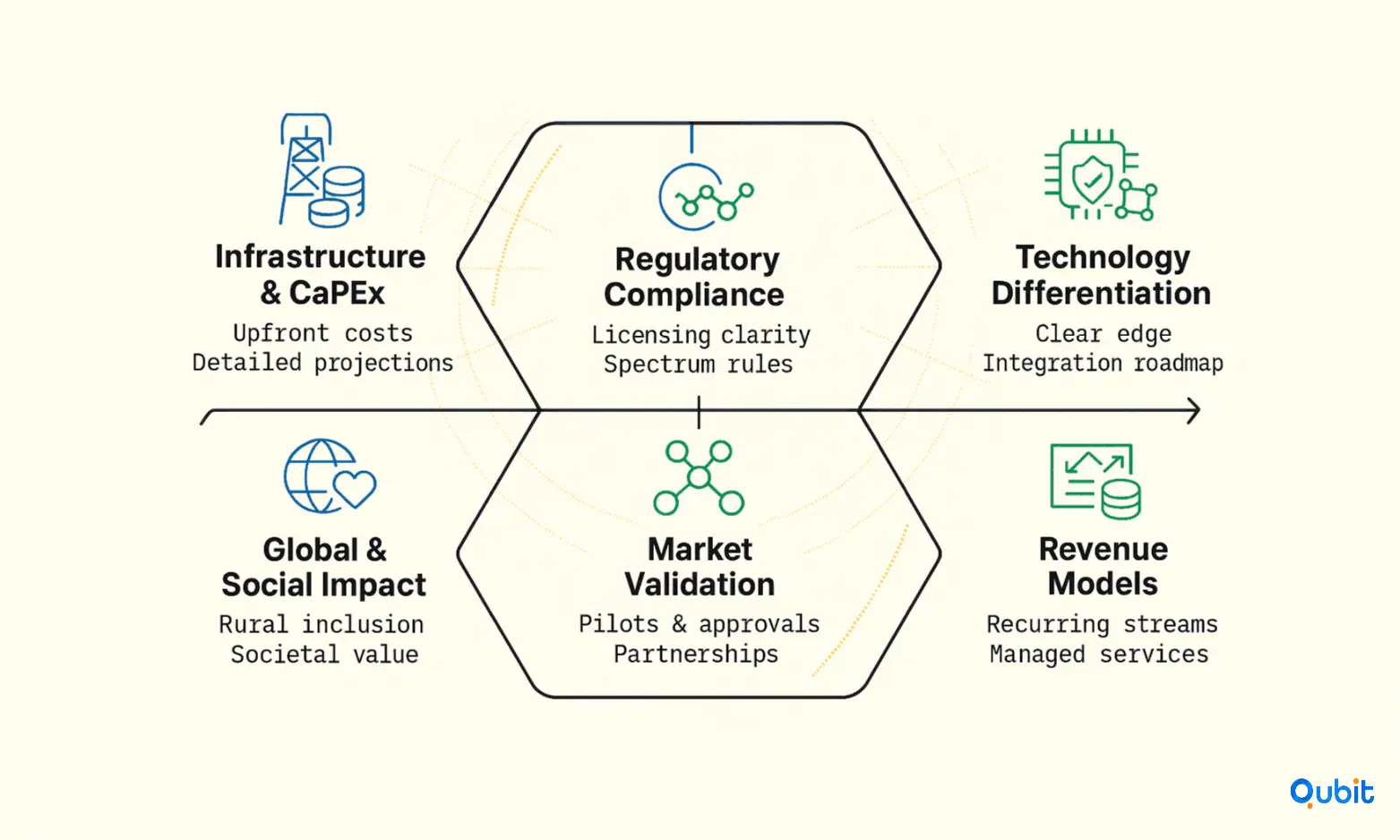Securing Series A funding is a pivotal milestone for any telecom startup. At this stage, investors expect more than a compelling idea, they want evidence of traction, a clear business model, and a roadmap for scalable growth. The right pitch deck is your primary tool for communicating this vision, building trust, and standing out in a competitive market.
This guide outlines the essential elements of a Series A pitch deck tailored specifically for telecom companies, drawing on best practices from industry leaders.
Why the Series A Pitch Deck Matters in Telecom
Telecom is a capital-intensive, highly regulated sector. Investors scrutinize not just your technology, but your ability to navigate regulatory hurdles, secure infrastructure, and monetize at scale. A well-structured pitch deck demonstrates your readiness for these challenges and your potential to deliver returns.
For a broader overview of telecom funding strategies, see How to Secure Funding for Telecom Startups: Strategies and Insights.
Why Are Series A Pitch Deck Essentials Different for Telecom?
Telecom is capital-intensive, highly regulated, and mission-critical for digital economies. Unlike SaaS or consumer tech, telecom startups face unique hurdles and investor expectations:

- Infrastructure & CapEx: Telecom businesses often require significant upfront investment for network buildout, spectrum, or hardware, making financial projections and use of funds slides much more scrutinized than in other sectors.
- Regulatory Compliance: Investors expect founders to demonstrate a deep understanding of licensing, spectrum allocation, and local/global telecom regulations, which can directly affect go-to-market and scalability.
- Market Validation: Because telecom solutions often serve governments, enterprises, or large populations, traction is measured not just by user numbers, but by signed pilots, regulatory approvals, and partnerships with carriers or public agencies.
- Technology Differentiation: The sector is rapidly evolving with 5G, IoT, AI, and cloud-based services. Investors want to see clear technical differentiation, integration capability, and a roadmap for staying ahead of industry trends.
- Revenue Models: Investors now favor telecom startups with sustainable, recurring revenue streams, such as managed services, SaaS for network management, or IoT connectivity platforms, over speculative, high-burn models.
- Global and Social Impact: With funding increasingly targeting rural connectivity, digital inclusion, and emerging markets, decks must articulate not just commercial upside but also societal relevance and alignment with government or philanthropic programs
Slide-by-Slide Breakdown For Your Telecom Startup Pitch
1. Cover & Mission
Open with your company name, logo, and a succinct mission statement. Add a tagline that signals your unique telecom focus.
2. Problem
Describe the telecom challenge you’re tackling—be it rural broadband gaps, network congestion, or 5G monetization. Use market data and real-world stories for impact.
3. Solution
Showcase your product or platform. What makes it different? How does it solve the problem better than existing solutions? Use visuals to make it tangible.
4. Market Opportunity
Quantify the size and growth of your addressable market. Reference global telecom trends, regulatory changes, and technology adoption rates.
5. Product Demo
Use screenshots, network diagrams, or a short video to make your product real. Highlight interoperability, security, and deployment flexibility.
6. Traction & Validation
Share key metrics: user growth, revenue, pilot results, regulatory approvals, and notable partnerships. Investors want proof that your solution works and is gaining momentum.
7. Business Model
Explain your revenue streams, SaaS, infrastructure fees, licensing, or hybrid models. Clarify pricing and why it’s sustainable.
8. Go-to-Market Strategy
Detail your sales channels, marketing tactics, and customer acquisition plan. Discuss partnerships with carriers, vendors, or government agencies.
9. Competitive Landscape
Map your competitors and show how you stand out. Highlight your unique value proposition, proprietary technology, or exclusive partnerships.
10. Technology & IP
Describe your technology stack, security features, and IP strategy. Investors want to know about your scalability, patents, and integration capabilities.
11. Team
Introduce your founders and key team members. Emphasize relevant telecom, technical, and business backgrounds. Add notable advisors if you have them.
12. Financials & Projections
Present your financial history (if any), 3–5 year forecasts, key metrics (ARPU, churn, margins), and growth milestones. Be realistic and transparent.
13. Funding Ask & Use
Clearly state how much capital you’re raising, how you’ll allocate it (product, network buildout, regulatory compliance), and what milestones you’ll hit with this round.
14. Vision & Impact
Share your long-term vision. How will your company transform telecom? What’s the broader impact on connectivity, digital inclusion, or industry innovation?
15. Closing & Contact
End with a memorable summary, call to action, and your contact details. Make it easy for investors to follow up.
Why This Matters for Investors
- Risk Mitigation: Telecom investments are large and long-term; investors need to see regulatory, technical, and operational risks addressed upfront.
- Alignment with Funding Trends: With more capital flowing into connectivity for underserved regions, government-backed projects, and AI-driven telecom solutions, decks must show alignment with these trends to attract funding.
- Proof of Execution: Given the sector’s complexity, Series A investors want to see not just vision, but execution—traction, compliance, and a credible path to scale
Conclusion
A standout Series A pitch deck for telecom companies blends data-driven storytelling, regulatory readiness, and a bold vision for the future of connectivity. Focus on traction, technology, and team, while making your slides simple, visual, and actionable.
For more guidance, explore our resources on telecom fundraising, pitch deck creation, and investor storytelling utilize our pitch deck creation services today.
Key Takeaways
- Focus on clarity, traction, and a compelling vision tailored to telecom’s unique challenges.
- Include all essential slides: problem, solution, market, product, traction, business model, go-to-market, competition, tech, team, financials, and funding ask.
- Use real data, visuals, and regulatory awareness to support your story.
- Show what sets your telecom company apart and why your team can win.
- End with a clear call to action and make it easy for investors to connect.
Frequently asked Questions
What traction do investors expect at Series A?
Investors typically look for evidence of product-market fit, such as signed pilots, regulatory approvals, revenue, or strategic partnerships.


 Back
Back



